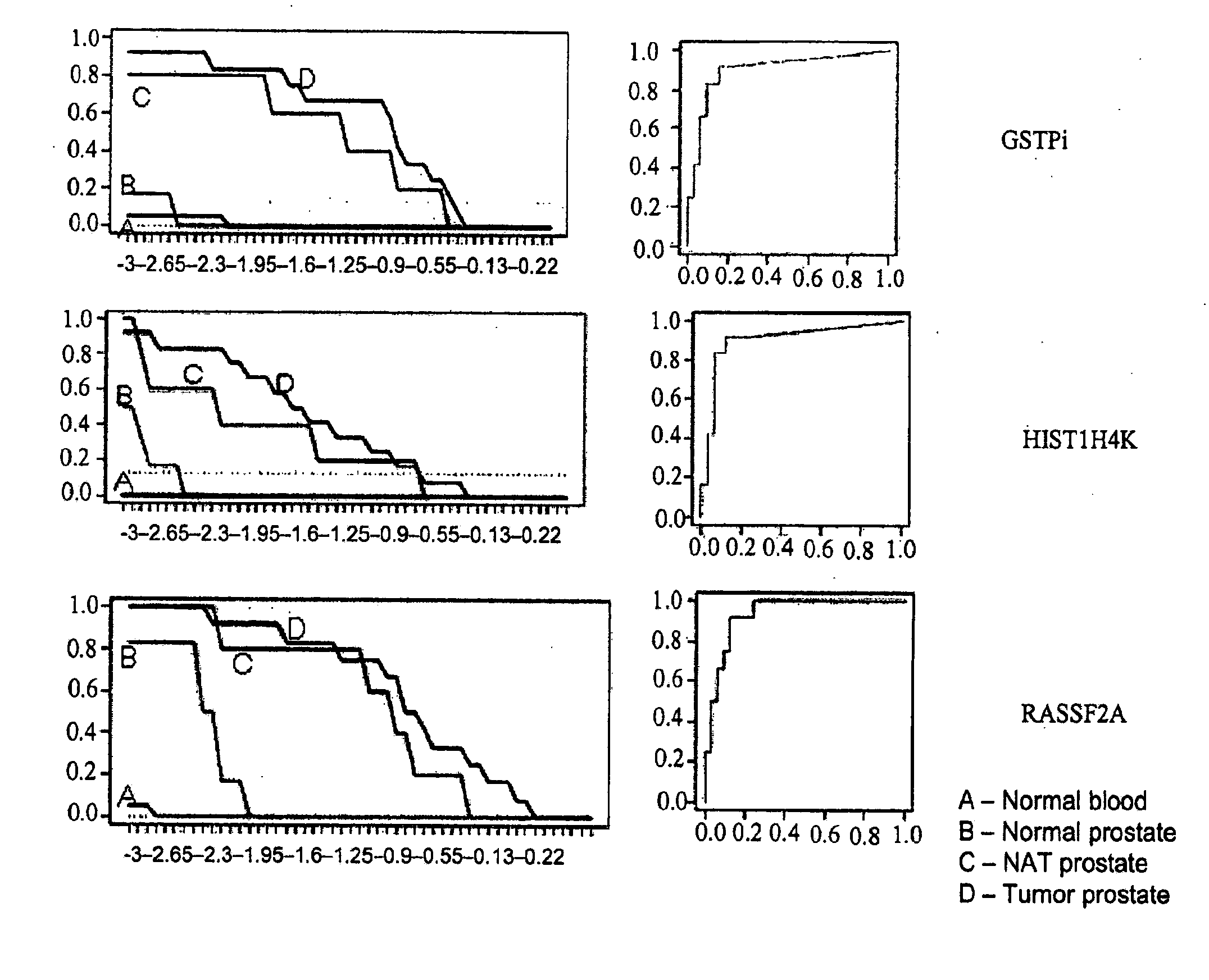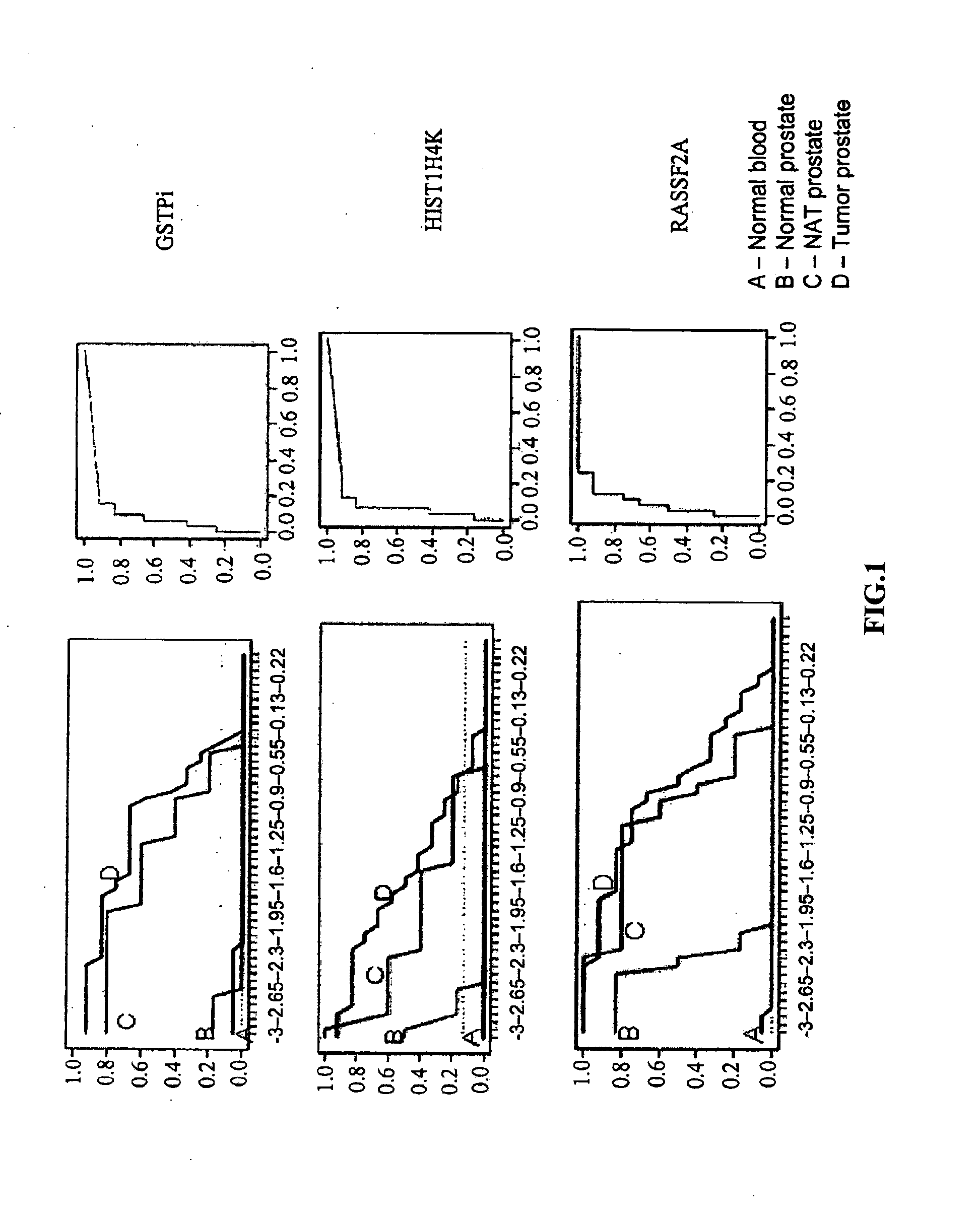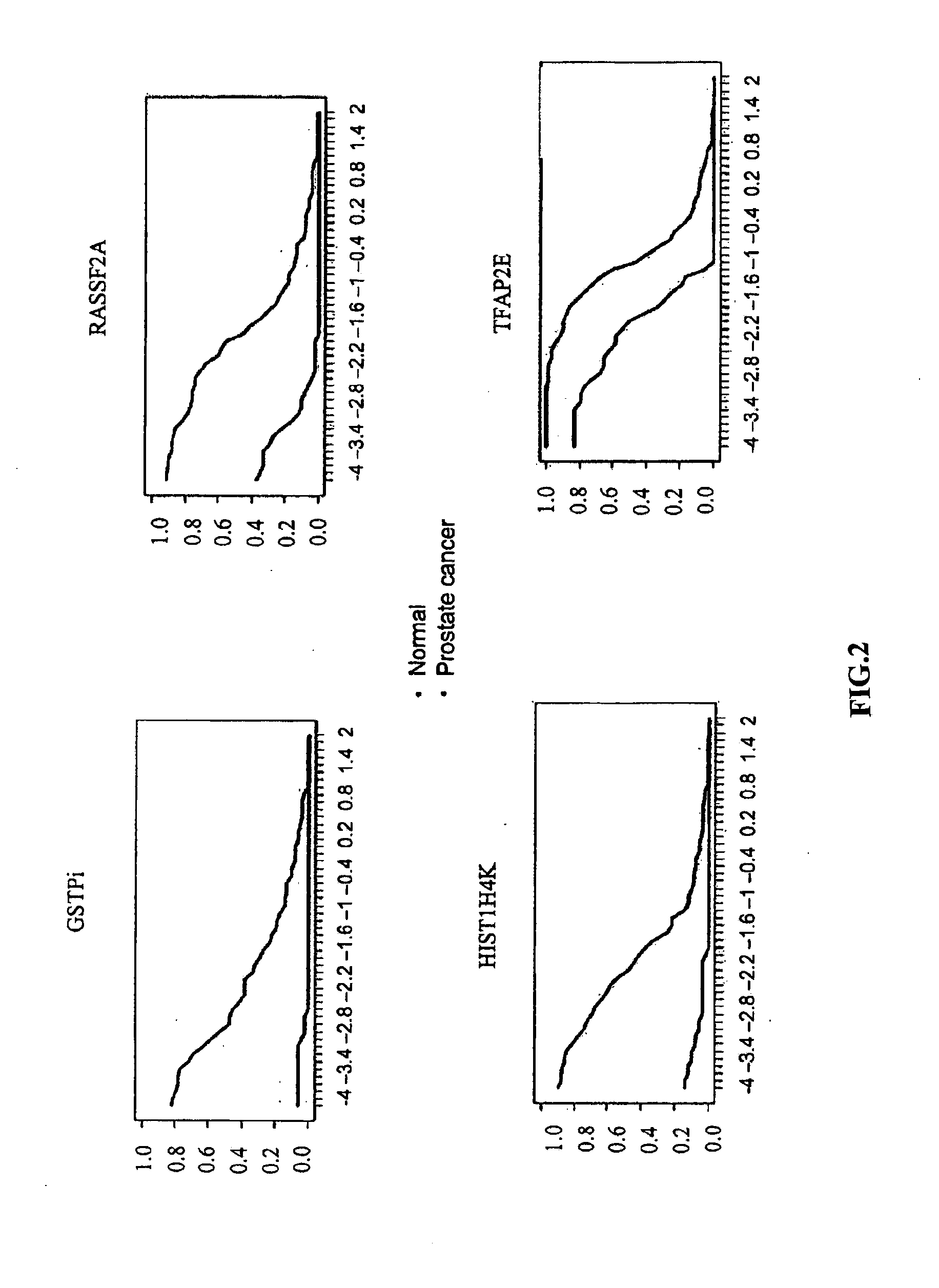Methods and nucleic acids for the analysis of gene expression associated with the development of prostate cell proliferative disorders
a prostate cell and gene expression technology, applied in the field of gene expression analysis associated with the development of prostate cell proliferative disorders, can solve the problems of reducing the sensitivity even with biopsy, affecting the detection and diagnosis of prostate cancer, and a large number of prostate biopsies conducted, so as to improve detection and diagnosis.
- Summary
- Abstract
- Description
- Claims
- Application Information
AI Technical Summary
Benefits of technology
Problems solved by technology
Method used
Image
Examples
example 1
[0261]The aim of the present study was to determine the feasibility of measuring DNA methylation markers for prostate cancer (hereinafter also referred to as PCa) in remote body fluids. In this process a high quality workflow flow for urine was utilized, candidate markers were analysed by HeavyMethyl™ (HM) technology (Cottrell et al., Nucleic Acids Res. 2004 Jan. 13; 32(1):el0.) and it was demonstrated that PCa sheds DNA that can be detected by means of methylation analysis in both plasma and urine with high sensitivity. It was thus established that the analysed markers were suitable for the development of a screening test for PCa based on DNA methylation analysis.
[0262]Study Objectives
[0263]The purpose of the present study was to conduct an investigation into whether DNA methylation markers of PCa can be measured in a remote body fluid. The study was designed to identify the optimal analyte for such a test and to generate specificity and analytical performance data for marker candi...
PUM
| Property | Measurement | Unit |
|---|---|---|
| temperature | aaaaa | aaaaa |
| temperature | aaaaa | aaaaa |
| temperature | aaaaa | aaaaa |
Abstract
Description
Claims
Application Information
 Login to View More
Login to View More - R&D
- Intellectual Property
- Life Sciences
- Materials
- Tech Scout
- Unparalleled Data Quality
- Higher Quality Content
- 60% Fewer Hallucinations
Browse by: Latest US Patents, China's latest patents, Technical Efficacy Thesaurus, Application Domain, Technology Topic, Popular Technical Reports.
© 2025 PatSnap. All rights reserved.Legal|Privacy policy|Modern Slavery Act Transparency Statement|Sitemap|About US| Contact US: help@patsnap.com



